Smart Textiles Design Lab Blog at The Swedish School of Textiles
Irreversibel Dynamic Textile Patterns / Plant dye
Colors created from the Botanical Garden Lund, Sweden 2015
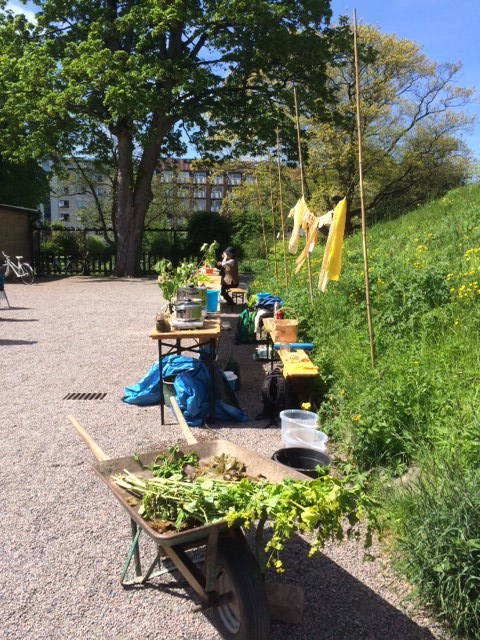
Plant dyeing in the Botanical Garden, Lund, May 24, 2015 We have chosen to color with plants from the botanical garden, plants that otherwise would be become wood chips or compost. This week a horse chestnut was cut down (because of the risk of collapse), and a beech has been culled and everywhere “vinglokan” pops up and need to be kept for. And the staff´s coffee machine will constantly give new coffee ground. So we have chosen to color with those. None of these are traditional dyeing plants, but we wanted to experiment with them to see what color is hidden here in May. We dye two different materials; wool and silk. The wool is available in three different qualities, both with and without mordant. Silk fabric is without treatment, but all the fabrics are washed and soaked as they are put into the dye bath. Grazed textiles makes the color adhere better to the fiber, and thus gives a better light fastness, but can also provide more intensity and different shades of color. So by using different qualities and mordants we get a varied range of colors from the same dye lot. In nature, there is a constant change, and in my textile experimental work I dye mainly without mordant (ie no added chemicals) to transfer this volatility to textile materials. From this perspective I created textile expressions that show an expression that is gradually changing; to what, and when? In ten minutes, one year, two months, fifteen minutes or constantly?
Dyeing Process (when dying at Botan)
• Pick plants (fill a pot full of fresh plant parts and pour the water over them)
• Boil the plants (1-2 hours)
• Filter the plant mass
• Color textiles (washed and possible pickled) in the color water for about 1 hour, < 85 ° C
• Rinse and dry Different parts of plants need different amounts of time to release their dye (1-2 hours is enough for most green leaves). The same applies during the dyeing, in both cases, it is also possible to dye with cold baths, but this requires more time, from a few days to weeks or months. It is not only the dye bath that determines what color fabric/yarn will get, it is also about what textile material you have, and how the color and fiber interacts, time for picking the plant, water quality etc. So, when looking at natural dyed samples it will not give the exact same color when you dye fabric/yarn a second time.
Colors created from the Finnish Arkipelag Eckerö, Åland 2013
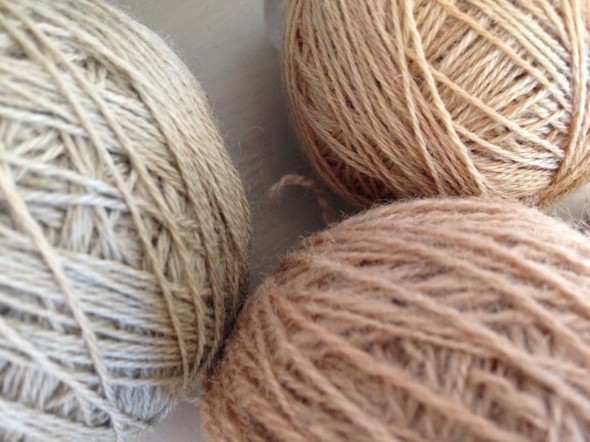
Textile expressions are traditionally crafted and produced to keep a given expression during their life cycle; a floral pattern is supposed to keep its flowers. However, things are changing. In my thesis work Designing Dynamic Textile Patterns the making of textile patterns and expressions aimed to change over time is examined. A carpet that lights up when walked upon, a bag that changes expression when some one call you, and an apron that is striped and changes into a checked pattern are some previous examples of dynamic textile patterns. Later I have started to look at natural dyes in relation to create dynamic irreversible textile patterns.
In my textile experiments with plant-dye, I dye without mordant (meaning no added chemical or salts). This is because I don’t want to influence the light/color fastness of the color, more the other way around actually, I want to create and advantage a inherent visible color ”change” in the textiles.
From this perspective I creates textile expressions with aim to change over time, creating textiles without a final expression and look, in a traditional manner. In this project the textile is crafted to show a changing expression evolving over time. By plant dyeing with ocean water and local plants I want to give ”life to” textile expressions by nature, rather than to picture nature.
THANKS to The Government of Åland, Västragötalandsregionen, Smart Textiles, The Swedish School of Textiles, University of Borås. Tanks Mervi Appel, Yvonne Törneroos and Kenneth Fagerström for the arrangements, Tessa with staff at Cafe Tsarevna for supporting me with missing equipment and lovely cakes and food, Anette Häger for Ålandic wool and borrowing me books on plant dye. SolBritt Eklund for introducing and joining me to Björkö to discuss textiles and of cause Maj and her husband Bengt Lindberg for welcoming me on their island with litchen and lunch in a beautiful house and such a friendly and magical environment. And also thanks to all of you that joined the workshop and for discussions about contemporary art and craft at Åland. I have had a lovely summer and working experience.
Documentation of this project is found a:
Pictures-diary show fragments from my indoor and out-door studion at Eckerö Post och Tullhus, Åland http://bada.hb.se/handle/2320/13250
Colors crafted from my garden Borås, Sweden 2012-2013
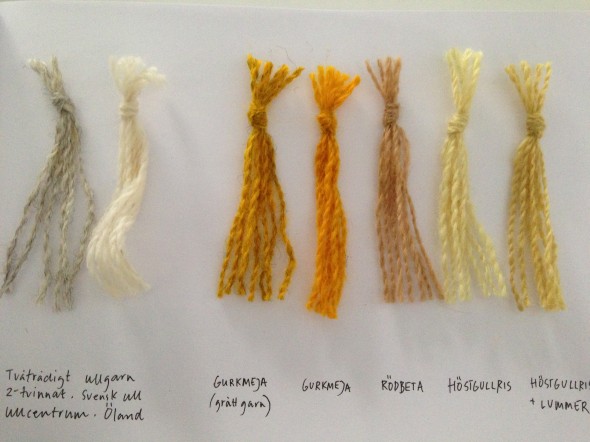
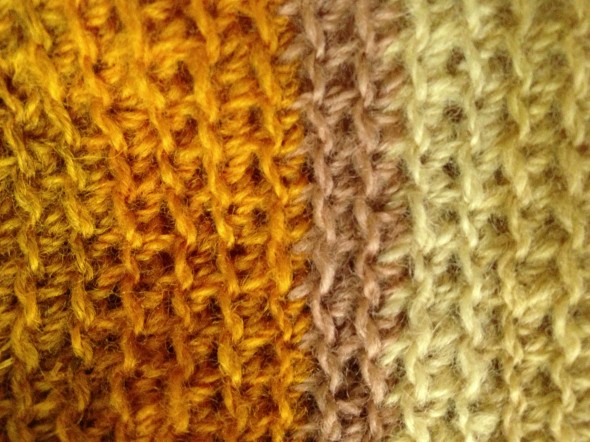
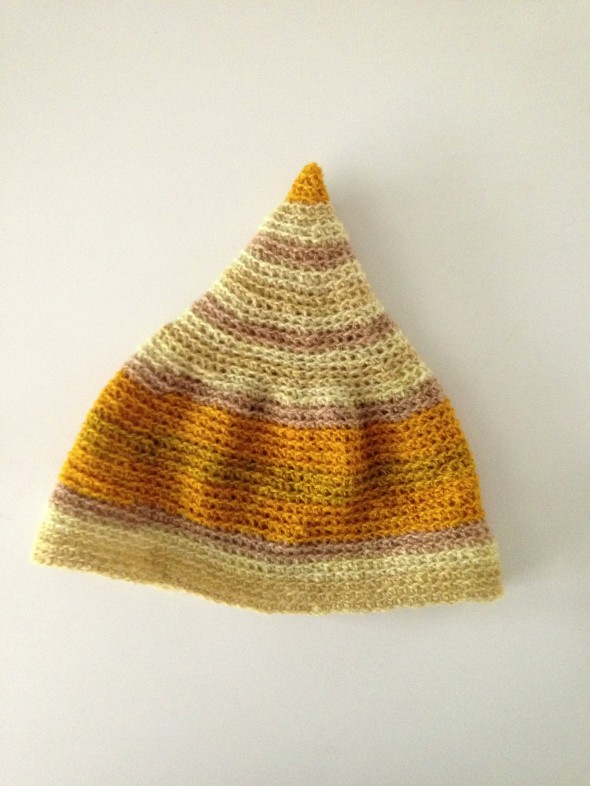
Wool yarn dyed with Solidago gigantea , Turmeric , Lummer and Beetroot. And from that yarn a crocheted hat is made. To start wearing his hat also means that the intended color change has been ” activated ” by beeing worn outdoors ( in UV light ). Starting date xx (to xx)
